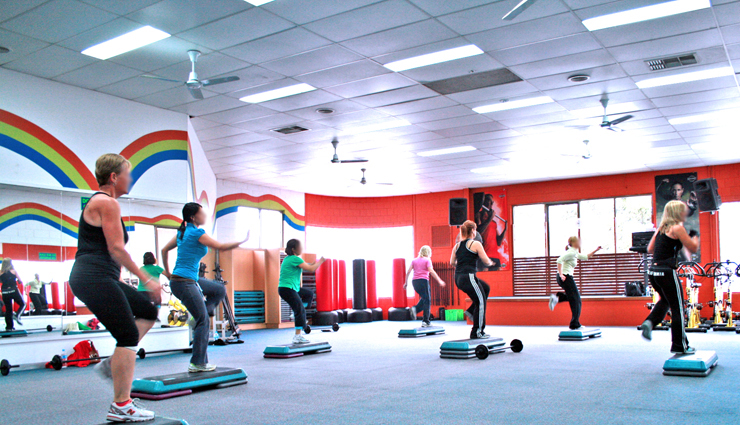- Home›
- Healthy Living›
- Tips To Add Cross Training In Your Workout Routine
Tips To Add Cross Training In Your Workout Routine
By: Kratika Maheshwari Thu, 24 Sept 2020 09:21:17

Dedicated training is something to be admired. Many athletes strive for the ability to get up and get out every single day whether it’s for a specific race or event or even, simply driven by a goal. Often that can mean adhering to a training plan based on both repetition and incrementally increased difficulty–monotony and overuse be damned.
But you may get hurt. Or plateau. Or experience a disruption in your training schedule. These can all be detrimental to accomplishing a goal. Then there’s also that inevitable boredom of doing the same training day in and day out. You swear that footprint on the trail was yours from yesterday.
Enter cross-training, an exercise program usually employed outside of these intense training blocks to add some variance (physically and mentally) to workouts. It keeps the body guessing, and has many athletes reap the benefits for their main sport: decreased injury potential, and added strength to the most-used muscles.

Here, we’ll detail the science behind cross-training, how to work it into your schedule, and some new exercises to try. Your main sport will thank us.
Simply put, cross training is training in another discipline in improving your main sport. The options are almost limitless–runners can strength train, swimmers can paddle board, cyclists can do yoga. The goal is to supplement your main sport with training that’s beneficial for certain muscles, movements, or even, your brain and mood.
For most athletes, the inclusion of cross training into a workout plan is triggered by an injury sidelining them from regular training. I was no different–hours of basketball and running led to knee pain (from patellar tendonitis, known as “runner’s knee” or “jumper’s knee”). But I was stubborn. When I should have stopped the joint-pounding activities, I continued to beat them like a drum. It got to a point where the pain wasn’t worth the workout, but I couldn’t give up working out all together. So I started swimming and incorporating yoga into my routine, which delivered positive and painless results.
Turns out, I’m not alone. Up to 56% of recreational runners experience injuries, with most of those relating to the knee.1 Supplements can help (like glucosamine, which promotes the development of cartilage), but up to 75% of those are overuse injuries.

Implementing Cross Training
Divorce yourself from the idea that cross training takes away from your regular training schedule. While you’ll inevitably be spending time away from your sweetheart sport, absence makes the muscles grow stronger.
There are three main groups of cross training for endurance athletes: strength training, aerobic low-impact work, and aerobic impact work, and each can be part of a cross-training program.
Strength Training
Touching upon all major muscle groups is important for effective strength training.
Incorporating strength training into an endurance regimen can enhance physical fitness, as it did in this meta-analysis of distance runners.3 Even just 30 minutes per week, once or twice a week, can suffice. And it doesn’t necessarily have to be done in a gym; you can take the at-home approach to incorporate plyometrics or things like push-ups.
Regardless of where you strength train, a full body workout will maximize the time you spend training. Consider hitting all the major muscle groups such as arms, chest, shoulders, back, core and legs (more on this later).

Aerobic Low-Impact Work
Probably the reason many athletes experiment with cross-training: take stress off those weary joints and reduce injury risk.
Low-impact activities or no-impact workouts can be done two or three times a week. It’s easily implemented, as it can replace an active recovery day or even a harder workout day depending on the exercise; so for those who think they’re losing gains because of cross-training, you may actually find yourself enjoying the cross training more than your main exercise.
Cycling, swimming, and rowing are some of the most popular low-impact workouts. For flexibility and core exercises, yoga and pilates are go-tos. And you may even be able to work out longer and more frequently using these types of workouts due to the lack of stress they cause the body (swimmers can work out every day, and they’re hitting all the major muscle groups). For example, if you planned on running 45 minutes, you could easily spend 70 minutes cycling.
Aerobic Impact Work
Maybe the reason you’re reading this article is because of too much aerobic impact work.
If you’re training, the amount of aerobic impact work will likely be higher (and maybe your only focus during that training block). But in the off-season, or times when you’d like to give your body a break, aerobic impact work should be done once or twice a week. As a general rule, cross-training is meant to limit the impact on the body.
Typically, cross training is meant to offer your body a break from the impact it faces during regular training. You can play team games, train runs, circuit train or do CrossFit as a cross-training method, as the impact is likely different from your normal routine. But be mindful: any impact work still puts a strain on the body.





